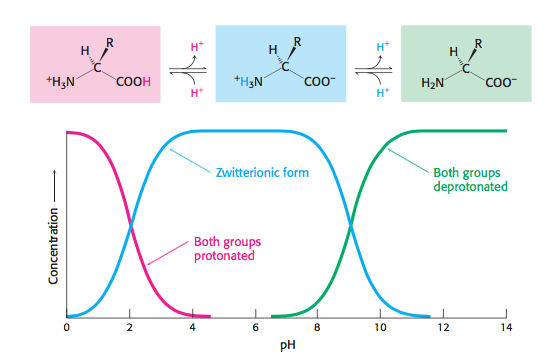The two forms of amino acids that your question asks about are called zwitterions (technically IUPAC says they should be called dipolar ions but the term zwitteron is pervasive).
Since amino acids contain both acidic (the carboxylic acid) and basic (the amine) moieties the molecule is able to undergo what almost appears to be an intramolecular acid-base reaction in which the acidic proton of the carboxylic acid protonates the amine, this is what gives rise to the species on the right of the image below.
Its worth pointing out the this property of the amino acids is valid at physiological pH for the naturally occurring amino acids, generally in aqueous medium (which living organisms have. Also as Jan pointed out in the comments, other polar solvents would also allow the amino acid to show this characteristic).
At other pH values, the molecules become singly ionised, favouring either the cationic or anionic forms. The range of pH values at which the amino acid is zwitterionic will also vary depending on which amino acid you're looking at (the pKa values are different for every amino acid, even if only subtly)


